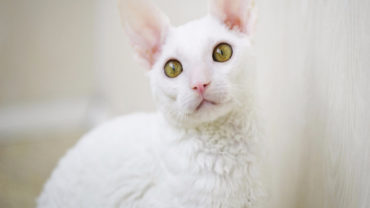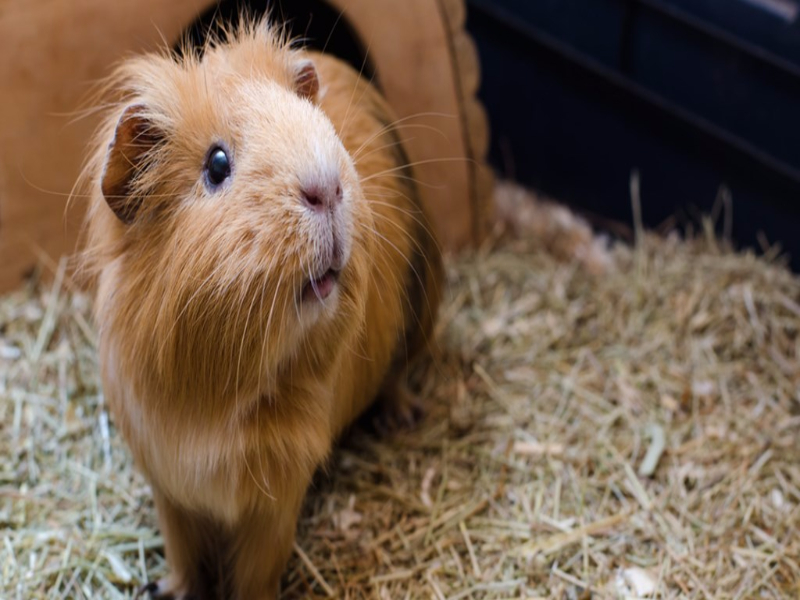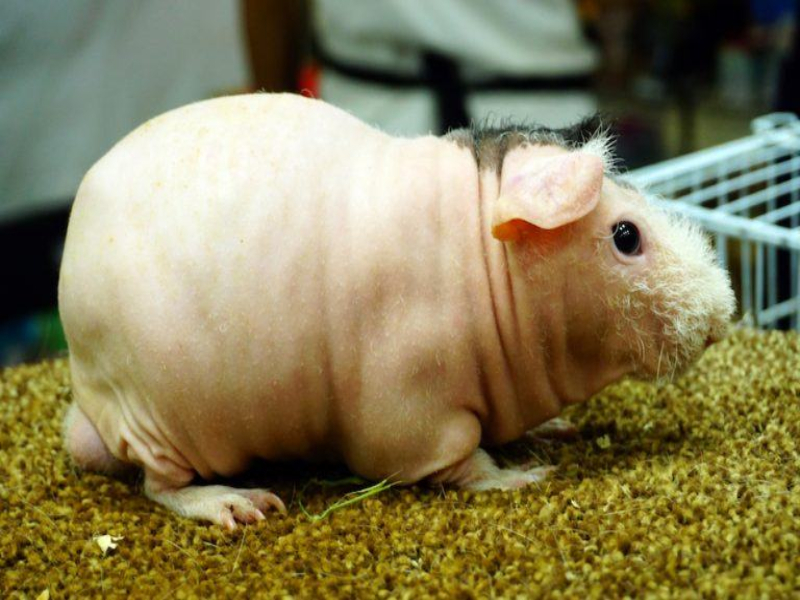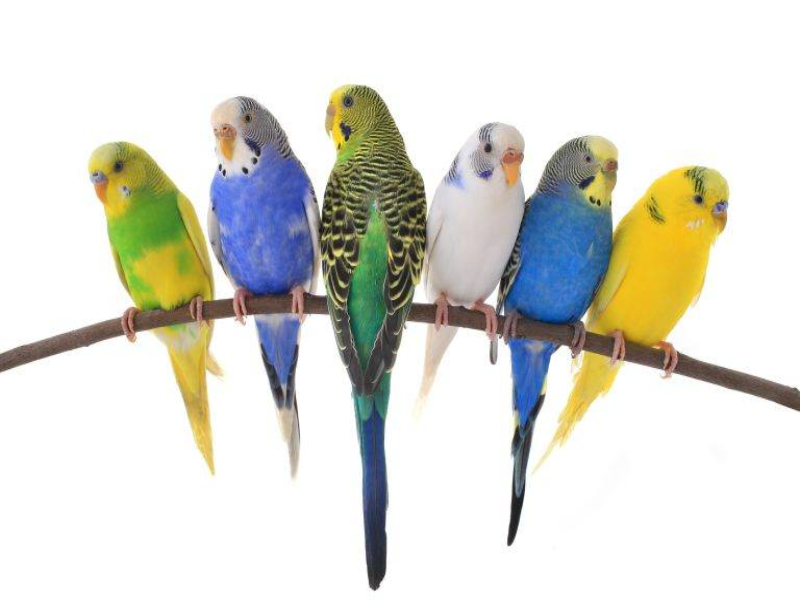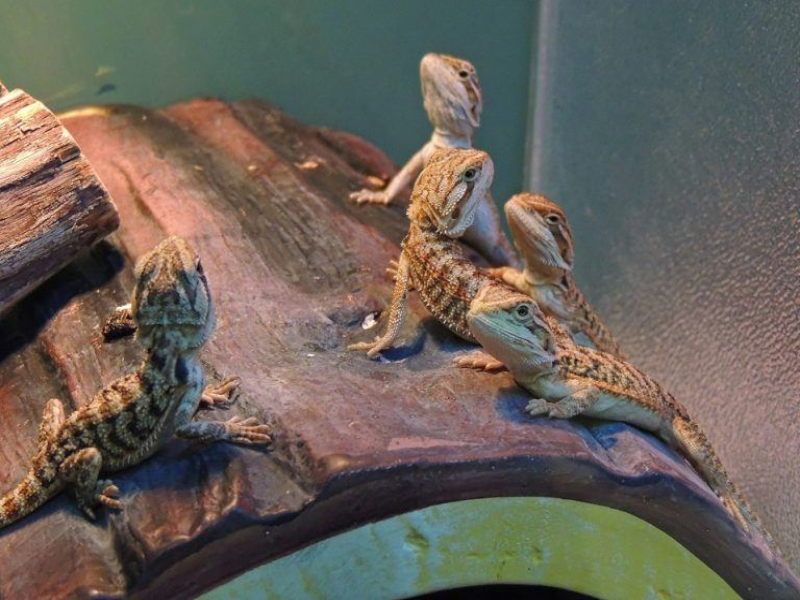Via CheatSheet: The Best Pets for Kids With Allergies
“Can we keep him?!” Whether you hear those words from a child who wants to adopt a puppy or a roommate who wants to take in a cat, you probably feel guilty saying “no” because of allergies. Kids and adults alike develop allergies to common pets, and it gets tough to find a pet that everybody can agree on when somebody runs the risk of itchy eyes, endless sneezes, and annoying rashes.
Fortunately, even if just looking at a cat makes your eyes itch or you find yourself sneezing the moment a dog comes near you, you can find a pet that works for you.
15. A small dog that sheds less
Many dog lovers with a pet allergy assume that they can get a “hypoallergenic” breed. Unfortunately for them, The New York Times reports that “there may be no such thing as a low-allergy or allergy-free dog.” Researchers found that the quantity of dog allergies is no different in homes with supposedly hypoallergenic breeds than in homes with breeds that aren’t hypoallergenic. Some people think that dogs who shed less are the safest bet, but they still shed dander that contains an allergy-irritating protein.
The Mayo Clinic reports that if you’re allergic to dogs but still want one, you should choose a small dog. (A small dog will shed less dander than a larger dog.) Keep him out of your bedroom and bathe him weekly. Either choose carpet-free flooring or shampoo your carpet regularly, and use a HEPA purifier to reduce airborne allergens.
14. A cat that sheds less
As with dogs, you can find many articles that claim to list hypoallergenic cat breeds, but there’s really no such thing as a cat that’s guaranteed not to cause problems for allergy sufferers. The Nest reports that some breeds do seem to produce fewer allergens, or shed less allergen-coated hair, than others. Siberian cats are supposedly easier on people with allergies, as are Balinese, Javanese, and Oriental shorthairs. The Devon rex and Cornish rex have very short coats, and Sphynxes have thin fur. These three also shed less than other breeds, leaving behind fewer hairs to spread allergens.
If you want to try adopting a cat despite your allergies, The Nest advises having a backup plan in place in case things don’t work out. You’ll need to keep your house extra clean to reduce allergen accumulation. Consider removing your carpets, and wearing more cotton and less wool. You probably can’t convince a cat to take a weekly bath, but you can usually wipe a cat down with a wet towel, and brush weekly or bi-weekly to reduce shedding.
13. A rabbit
Even if you know that you’re allergic to dogs or cats, that doesn’t necessarily mean you’ll react to all fuzzy animals. In fact, your immune system is very specific. An allergy to cats or dogs doesn’t guarantee an allergy to any other animals, so you might want to consider a rabbit. Researchers have found that severe allergies to rabbits are unusual, though some people do react to a protein found in rabbits’ skin and hair. Petcha reports that rabbits spread this allergen over their bodies by grooming themselves.
You probably don’t want to keep a rabbit if you have a severe reaction, such as reoccurring skin rashes, chronic fatigue, bronchitis, or other respiratory issues. But if you find yourself mildly allergic to your rabbit, you can minimize your reactions by having someone else in the household groom the rabbit daily, keeping the animal out of your bedroom, and keeping the rabbit away from your face. You may also want to avoid adopting an Angora rabbit or other longhaired breed, simply because they shed more dander and groom themselves more extensively.
12. A guinea pig
If you don’t want a rabbit, another option to consider is a guinea pig. PetFinder reports that if you have allergies to a lot of mammals, you can go to an allergist to get tested for a guinea pig allergy. Guinea pig hair and dander don’t themselves cause allergies, but they do make “excellent” airborne carriers for irritating proteins in the animal’s saliva, urine, and secretions from glands in the skin.
If you do have a mild allergy to guinea pigs, but still want one of these adorable pets anyway, you can take a few precautions. Don’t keep your guinea pig in your bedroom, and don’t store hay in the house. Buy a HEPA air purifier and position it close to the guinea pig’s cage. Have a non-allergic family member clean the cage, which is a major source of allergens. Lastly, always wash your hands and arms after handling your guinea pig.
11. A hairless guinea pig
Pet Health Network has an unusual suggestion for allergy sufferers looking for a pet who won’t cause sneezing fits: Consider a hairless guinea pig. Despite the name, this little animal isn’t completely hairless. (They have what many people call “peach fuzz.”) But you don’t need to brush them, which may translate into fewer allergens flying around the house — 0r at least fewer opportunities for you to expose yourself to those allergens.
You will need to keep your hairless guinea pig out of the sun so that it doesn’t sunburn. Otherwise, hairless guinea pigs just need the same care you’d give to a guinea pig with hair. (That means a lot of hay, a little bit of vegetables, plenty of fresh water, and a daily vitamin C supplement.) Guinea pigs love attention, and they’re robust enough for even small children to handle safely.
10. A hamster or gerbil
Parents reports that some children have allergic reactions to rabbits or guinea pigs. (Possibly because rabbits and guinea pigs are larger than other small pets and shed more. That increases the amount of allergens exposed to owners.) In that case, you may want to consider a smaller rodent, such as a hamster, a gerbil, or a rat. If you’re worried about an allergic reaction, you should assess not only whether you or your child are allergic to the animal itself, but also whether you’ll react to the animal’s food or bedding.
Fortunately, most people keep small rodents in cages, which keeps the rest of the house allergen-free. So while they do produce dander, it likely won’t end up all over your house. Keeping an animal in a specific part of the house is generally recommended as a smart way to reduce your exposure to allergens.
9. A rat or mouse
Another great option for a small but furry pet? A rat or mouse. They are mammals, so they can cause allergies like kittens or puppies. But Parents reports that because rats and mice are much smaller than other popular furry pets, they produce considerably fewer allergens that can get spread around your house. It also helps that you probably won’t let a rat or a mouse run around your entire house.
Rats can make a great pet if you (or your child) wants an animal who will be cuddly; Parents says that rats love people to hold them. Mice, on the other hand, are a little more fragile and a little more difficult to handle. They still enjoy interacting with people though, which can provide hours of entertainment.
8. A parakeet or cockatiel
Considering a bird in order to avoid allergic reactions to furry pets? That’s probably a good move if you’re only allergic to dogs, cats, or rodents. But keep in mind that birds also shed dander, which means that they can cause allergies similar to those mammals cause. The safest bet is a small bird, which may shed less dander and cause fewer allergic reactions than a larger bird.
Parakeets and cockatiels produce a relatively small amount of dander, which makes them great candidates for households with allergy sufferers. PetMD also recommends an electus, pionus, or toucan as pet birds that are less likely than other breeds to induce an allergy attack. Parakeets specifically shed very little dander, even when they’re molting. Whatever bird you choose, you can use a HEPA filter and regularly clean your home to reduce your exposure to their allergens.
7. A hedgehog
Parents reports that children with pet allergies typically aren’t as irritated by hedgehogs as they are by other animals. Because hedgehogs have quills, they shed less dander, and veterinarians report seeing fewer allergic reactions to them. Just keep in mind that you need to do some research on local and state laws because hedgehogs are among the pets that are illegal to own in some states.
PetMD reports that hedgehogs make great pets for people who will handle the animal each day to socialize it. You should allow your hedgehog to come out of its cage each day for exercise and social interaction. These animals famously roll up in a ball in response to feeling frightened or threatened. But handling your hedgehog each day when he’s young will help him be accustomed to people and less likely to ball up.
6. A snake
Want to avoid pets with fur or quills? Then our next suggestion is to consider a reptile. They don’t have fur to shed. And while many — most famously, snakes — do shed their skin, Parents reports that the skin typically lacks the proteins that cause allergic reactions. However, one concern with reptiles is exposure to salmonella. While most reptiles that are properly cared for remain healthy, some do carry salmonella as part of their normal intestinal bacteria. Though it’s normal for those animals, it can harm humans, especially those with compromised immune systems.
Fortunately, Parents reports that children with allergies aren’t any more susceptible to salmonella than anybody else. But you should keep in mind that reptiles make better pets for older children, who understand the importance of washing their hands after they handle the reptile. And don’t forget; larger snakes will require live meals, like mice.
5. A turtle
Another easy pet that’s unlikely to cause an allergic reaction — even for adults and kids with lots of allergies — is a turtle. Pet Health Network names turtles — and similar reptiles, like tortoises — as a great option for people with allergies, compared to popular pets like cats and dogs. When cared for properly, some turtles and tortoises can live for more than 50 years, which means that you’ll have a long time to enjoy the companionship of these allergen-free pets.
As with snakes and other reptiles, it’s possible for turtles to carry salmonella. That means anybody who handles the turtle must wash their hands thoroughly afterward. For that reason, many people advise that you don’t buy your children a turtle until they’re old enough to understand the importance of washing their hands.
4. A bearded dragon
Parents reports that bearded dragons make great allergy-friendly pets. Because the dander that cats, dogs, and other mammals shed is a major source of allergies, reptiles who don’t generate dander are often a great option. Reptiles like bearded dragons also don’t have hair that can further trigger your allergies. And not only will bearded dragons interact with people, but they’re also easily trained with positive reinforcement.
Again, just note that reptiles can carry salmonella, so many veterinarians don’t recommend them for children under age 5. Also, pregnant women, older people, and anyone with a weak immune system probably shouldn’t handle them. Otherwise, you’ll just need to wash your hands before and after you handle your bearded dragon.
3. A tarantula or a scorpion
PetMD notes that many exotic pets are safe for allergy sufferers, including tarantulas and emperor scorpions. Stafford Oaks Veterinary Hospital reports that while tarantulas and scorpions “aren’t for everyone,” they do make great and completely hypoallergenic pets. According to The Spruce, tarantulas, specifically, are unique but quiet pets. They obviously aren’t the best choice if you want a pet you can handle extensively, but they may be right for you if you don’t want a cuddly animal and would prefer something fascinating to watch instead. There are numerous sizes and species to choose among.
And while tarantulas can bite, the toxicity of the venom is usually on par with a bee or wasp sting. Emperor scorpions are also relatively innocuous, and are also pets that you shouldn’t expect to handle very often.
2. A frog
Frogs of both the land and underwater variety are easy pets to care for and are pretty unlikely to irritate people with allergies. Underwater frogs are the easiest type to feed and care for, since they can eat pelletized food instead of the live insects you’d need to feed to a land frog. Pet Health Network notes that frogs and toads make great pets for people who are more interested in watching an animal than handling one.
Like reptiles, frogs and toads lack allergy-inducing fur. Instead, they just have thin, delicate skin covering their bodies. In general, you shouldn’t handle an amphibian often, both to avoid damaging their sensitive skin and to prevent transmission of infectious bacteria to the animal. Some frogs and toads actually secrete toxins that can irritate or poison you if absorbed by your skin, so be aware of that when choosing one to call your own.
1. A goldfish or betta fish
Fish are arguably the safest pets for people who suffer from allergies. Because they stay in water, you don’t actually have any direct or airborne contact with a fish, so you probably won’t have any issues with allergies.
But that doesn’t mean you’re completely out of the woods, Parents notes. You shouldn’t handle fish or stick your hands in the aquarium water, since aquatic environments can expose you to bacteria that can cause an infection. If you (or your child) has a cut or scratch, contact with fish can cause fish-handler’s disease. (You’ll see a red circle develop around the infected area, and feel itchiness and burning.) Just remember to carefully wash your hands to reduce the risk of exposure. But as long as you handle them carefully, a goldfish — or any other kind — is a truly hypoallergenic pet that kids or adults can enjoy.


